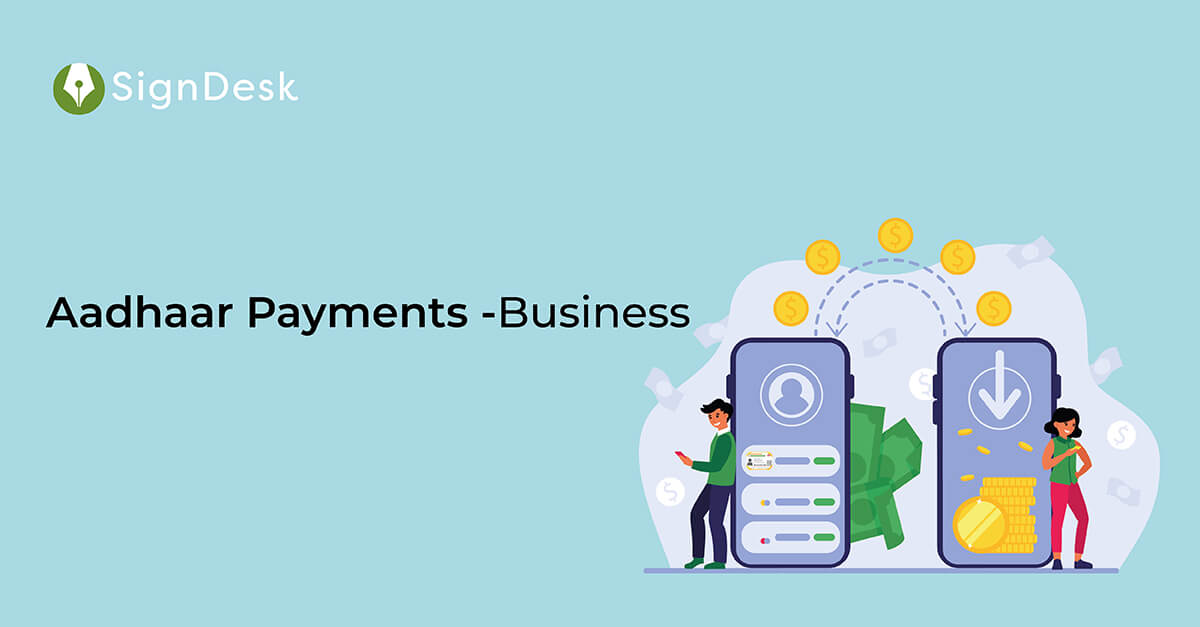Unified Payment Interface (UPI)
Since the launch of the Unified Payment Interface (UPI), the main objective of the Government has been to move towards a cashless economy.
With the help of the Aadhaar-based Unified Payment Interface (UPI), an individual can make a purchase using his/her Aadhaar number and/or biometric print.
Any payment made will be made from the person’s Aadhaar linked bank account.
The only drawback would be that, two individuals may not be able to transact between each other without a scanner.
Bharat Interface for Money (BHIM), which is a Mobile App developed by National Payments Corporation of India (NPCI), is a type of UPI that facilitates online payment through Aadhaar based systems.
Aadhaar Payments
Aadhaar has been adopted in the Indian banking system and financial markets and since demonetization, the growth and use of Aadhaar enabled payments has been tremendous.
The Unique Identification Authority of India (UIDAI) has developed two platforms:
1. Aadhaar Payments Bridge (APB)
A system related to the welfare scheme that facilitates the seamless transfer of all payments to beneficiary residents using their Aadhaar Enabled Bank Accounts.
2. Aadhaar Enabled Payment Systems (AEPS)
A system that leverages Aadhaar online authentication and enables Aadhaar enabled bank accounts to be operated in an anytime-anywhere banking mode.
Aadhaar Enabled Biometric Attendance System (AEBAS)
These efficient and effective Aadhaar based attendance systems were introduced in Government offices in 2014.
The purpose of introducing such systems was to check the absenteeism and late arrival of Government Officials.
Government employees are required to enter their Aadhaar number and fingerprint on the sensor for verification of attendance on the system.
The public can access these records on the Government website.
Unemployment Scheme
Aadhaar is already linked to the National Rural Employment Guarantee Act, 2005, where the subsidy or payment is directly credited to the bank account of the Aadhaar holder (the bank account has to be linked with the Aadhaar account).
Unemployment payment and record keeping can be done in rural-urban and urban areas in a similar fashion.
Employees Provident Fund Organization (EPFO)
Though Aadhaar is not essential for any provident fund transaction, it does make the process easier.
EPFO and Unique Identity Numbers (UAN) has been linked with Aadhaar so that beneficiaries can receive the amount due, directly to their respective bank accounts through National Electronics Funds Transfer Program (NEFT).
What Else Could Aadhaar Be Used For?
Startups that require funding and investment could receive the same through their Aadhaar linked bank accounts which would raise the credibility of the transaction, the security of the funds and would also verify the authenticity and legitimacy of the start-up and its founders.
This would create transparency in the financial market as the investors will have access to how their investment is being spent.
Criminal history and background verification checks for employees will be authenticated with the help of Aadhaar.
A company or startup will get notified when any person with a previous pending case, criminal history, sex offense, etc apply for a position in the company, sign on as a user or customer through Aadhaar.
Besides, this would be the sort of authenticity that is required instead of just verification done by linking a phone number, Gmail account or signing up through facebook, considering the cases that have come to light in the recent past.
Sharing of customer data, storage and processing have become significant over the past few years.
This information is collected through a phone, laptop, ipad and recorded in the form of voice, photos, location, messages, etc.
User data patterns and trends enable companies to make informed decisions on customers behavior, product development and service efficiency.
How Can Aadhaar Help?
Two small scale companies that have complementary goods and/or services and are trying to compete with established players will require sharing resources (consumer/user information) that will enable them to compare and combine diverse databases, thereby carving out a market share for themselves.
This data will be generated and shared using Aadhaar only upon acceptance of the user.
Banks, Credit Rating agencies and Non-Banking Financial Corporations can avail the use of Aadhaar to streamline and screen the loan application process.
If a person’s bank account is linked to their Aadhaar account, then all previous credit transactions and loan history (sanctioned and unsanctioned) should be made available to the creditor or agency.
This will ensure that any loan applicant will not default on their loan or interest payments and the number of loans issued to dubious and suspicious people with a questionable credit history will be minimal.
Payment of taxes and compliance by individuals and companies alike, through Aadhaar based systems, seems like the next logical step for the Government.
Try Our Service
SignDesk.com is one of the first bunch of startups to have come up with the idea of commercialising eSignature services.
To simplify the process for small business and for people who want just a single signature, SignDesk.com has separate pricing structures based on the number of eSign requirement for different entities as well. Try our service now
